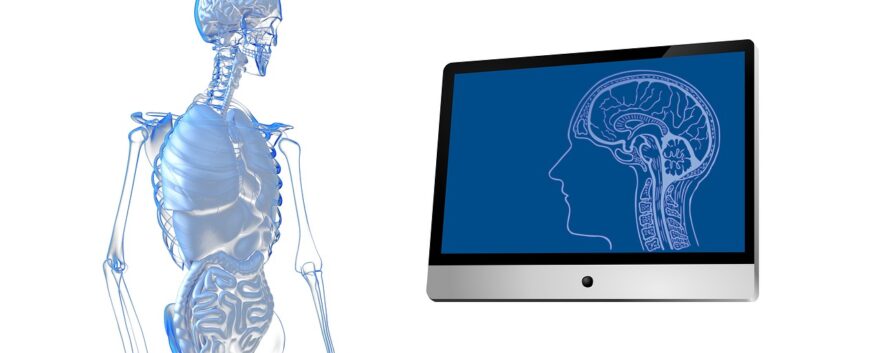“Essential” vs. “Nonessential” Is Not a Choice
The human organism was not designed to be self-sustaining. There are many biologically active compounds that are necessary for healthy metabolism that the human body can synthesize from smaller building blocks. Humans must ingest other molecules, however, for homeostasis to occur. These are called “essential” compounds.
What we eat affects energy levels, wellness, and the body’s ability to fight disease. In addition, medical science has clearly shown an association between poor lifetime dietary habits and the probability of certain cardiovascular diseases, cancers, and diabetes developing. Therefore, understanding how to maintain health and well-being and prevent the consequences of not eating a well-balanced diet is essential information for everyone at any stage of life.
You Are What You Eat
To see the effects of a balanced diet on the body, look no further than the human body deprived of a balanced diet. One example involved sailors before science had identified the relationship between Vitamin C and Scurvy. Scurvy is just one condition a balanced diet can prevent.
Nutrients are “substances that provide nourishment essential for growth and the maintenance of life,” per Oxford Languages. The role of nutrients in preventing and managing chronic diseases is to maximize outcomes in the most common diseases.
“Empty calories” may not directly cause diabetes, but they are known to encourage development through weight gain. Coronary artery heart disease is associated with hypercholesterolemia and dyslipidemia. The time to start modifying diet choices is before circulating fats create plaques, not after a stroke or heart attack. Obesity is an American epidemic. Childhood obesity increases yearly. Thanks to advances in medical science, humans live longer. Unfortunately, many live out their extended life expectancy in pain from osteoporosis-related fractures. Older folks can avert much of this sad consequence with diet and vitamin D3 supplements.
“You’re Just Not Yourself When You’re Hungry.”
A popular candy bar company based an entire ad campaign around sugar’s rapid effects on the human mind and mood. It’s not just the sugars; everything consumed has a mental and mood effect. From sources of energy to providing the lipid membranes of nerve cells and proteins for structure, the impact of diet on mood and cognitive function is profound.
• Omega-3 fatty acids
There are three main Omega-3 Fatty Acids:
- Alpha linoleic acid (ALA) is found in plant oils.
- Eicosapentaenoic acid (EPA) is found in fish/seafood oils.
- Docosahexaenoic acid (DHA) is found in fish/seafood oils.
• B vitamins
Nutritionists generally group the eight B vitamins as “B complex Vitamins.”
They are found in oily fish, beef, dairy, and green leafy vegetables and are necessary coenzymes for nerve pathways.
• Magnesium
Mg is an ion that affects diabetes, BP, mood, sleep, muscle and nerve transmission, and heart rate.
The Building Blocks of a Healthy Diet
Image by Ulrike Mai from Pixabay
“Macronutrients are the nutritive components of food that the body needs for energy and to maintain the body’s structure and systems,” -MD Anderson Nutritionist.
• Carbohydrates
Carbohydrates are made by repeating sugar molecules.
• Simple vs. complex carbs
Simple carbohydrates are, as the name implies, simple chains of glucose molecules. When consumed, they are easily broken down or energy.
Complex carbohydrates are sugar chains that are bridged. As a result, it takes longer to break down into usable sugar molecules.
• Fiber
Fiber is an important form of undigestible plant starch. It adds bulk to stools and plays a preventive role in bowel cancer and cholesterol excretion.
• Proteins
Mammals make proteins from amino acids. The structure of DNA and RNA, bone, muscle, teeth, and other connective tissues rely on proteins.
• Complete vs. incomplete proteins
Humans must ingest nine of the 22 amino acids required for protein synthesis. Several plant sources of essential amino acids include quinoa and buckwheat.
• Fats:
Not all fats are bad. In fact, cell membranes are made up of lipoproteins and require lipids to maintain healthy structure and function. The difference between saturated and unsaturated fats is, in general, saturated fats are solid at room temperature. Meats and dairy products are common sources of saturated fats. These fats tend to cause atherosclerotic artery plaques.
Unsaturated fats are in a liquid phase at room temperature. Nut oils, vegetable oils, and fish have primarily unsaturated fats. These fats shift the HDL (“good cholesterol”) to LDL (“Bad cholesterol”) ratio positively. There are two primary unsaturated fats, monounsaturated and polyunsaturated.
• Trans fats and their health risks
When fats are heated, for example, in a deep fryer, Trans fats increase LDLs and decrease HDLs associated with an increase in heart disease and stroke.
Big Things Come In Small Packages
Image by Bruno /Germany from Pixabay
“Micronutrients are a chemical element or substance required in trace amounts for the normal growth and development of living organisms.” -Oxford Language.
Except for Vitamin D, micronutrients must all come from outside the body; they are all essential.
• Vitamin D
Vitamin D is both a hormone and nutrient required for healthy bone through its effect on calcium and phosphorus metabolism. Vit D also affects immune responses, cancer, and inflammatory syndromes.
• Iron
Humans require iron for a variety of metabolic processes. For example, electron transport, tissue oxygenation, and DNA synthesis require the Fe radical.
• Calcium
Calcium is an important ion for cellular messaging and structurally as a mineral.
What Goes In Must Come Out
Image by Peggy und Marco Lachmann-Anke from Pixabay
Hydration is a critical player in metabolism and excretion. 60% of an adult’s body is water. The loss of even a small amount of that fluid balance can result in catastrophic outcomes. In addition to maintaining blood pressure, fluid balance keeps serum concentrations of glucose, proteins, and fats in range.
Being aware of hydration needs is the first step. Then, developing good hydration habits based on activity and metabolic needs will follow. Finally, practice “listening” to your body. It will tell you when to drink more or less.
The Gut Talks to the Brain Who Talks to Everybody Else
Image by Gerd Altmann from Pixabay
Keeping the gastrointestinal tract happy keeps the rest of the body comfortable through multiple biochemical feedback loops. The types and quantities of probiotics stimulate receptors in different areas of the brain. Probiotics are the “good bacteria.” Prebiotics is the food that nourishes probiotics.
When the gut microbes are not balanced, dietary absorption, fat storage, and glucose metabolism are affected. Developing a gut health routine is simple in a few steps:
- Start the day with a yogurt parfait.
- Eat miso soup regularly.
- Add kefir to smoothies.
- No matter how much fiber you ingest, eat more.
One Size Doesn’t Fit All
Image by Gerd Altmann from Pixabay
Nutritional requirements vary with certain “special circumstances|” in life. For example, A woman requires about an additional 80,000 kcal to carry a pregnancy to term. In addition, breastfeeding requires approximately 500 extra kcal/day.
After age 60, there are a few points to remain aware of:
- More than hydration is needed.
- Electrolyte balance becomes more important, especially in warmer weather.
- Older people may require protein supplementation to compensate for wasted muscle mass.
According to a study examining nutrition for young athletes, “an ideal diet comprises 45% to 65% carbohydrates, 10% to 30% protein, and 25% to 35% fat.” As a result, blood is diverted away from muscle to the gut for digestion. Attempting to work out too soon after a meal leaves the meal stagnant in the GI tract.
Eight allergens (cow’s milk, shellfish, wheat, nuts, fish, soy, peanuts, and eggs) account for over 90% of all food allergies. Finding substitutes for one or more allergens may take time, but it is essential.
What is “Processed” and Why Add Salt or Sugar?
Image by Steve Buissinne from Pixabay
“Processed” foods are any food altered from its fresh, natural state. Some food companies process to such a degree that it becomes a different entity. Spam is an example. Often the processing removes any nutritional value and, worse, uses a preservative that could be cancer-causing. Salt is another preservative with potential ill health risks.
Food scientists add sugar to make the final product more palatable; however, it fills the end processed food up with “empty calories.” It also is a subtle contributor to obesity and glucose intolerance.
Teach an Old Dog Some New Tricks
Image by Werner Heiber from Pixabay
Change bad habits. It may seem daunting at first, but the rewards will fuel success. Start with no added sugar, sugar substitutes, or diet sodas. Invest time into meal planning. Check what’s on hand and incorporate leftovers. Be sure to include some favorites.
Practice mindful eating. Specifically, pay attention to how and when you eat. Eliminate stress eating. Let go of any judgments or old scripts. Form a new, healthier relationship with eating. Learn to read labels. If you can’t pronounce it, you don’t need to eat it.
If Not You, Who?
Image by StockSnap from Pixabay
Once you open your eyes to a nutritious lifestyle, you can’t close them again. They say, “Knowledge is power.” Now is the time to use the power. No matter your age, health, education, or motivation, only one person is responsible for your health and well-being: you.
Embracing the goodness of nature’s offerings can play a pivotal role in achieving optimal health. One such powerful natural supplement is shilajit resin. This ancient substance, rich in essential minerals and nutrients, has been revered for centuries for its potential health benefits.
By incorporating shilajit resin into your daily routine, you can unlock a world of potential health advantages. It is known for its potential to support energy levels, enhance cognitive function, and boost the body’s natural defenses. The beneficial properties of shilajit resin make it a valuable addition to your holistic approach towards well-being.
Frequently asked questions:
- What is the best diet for overall health?
- A balanced diet is best for overall health.
- Can I get all my nutrients from supplements?
- In theory, yes, but in practice, no. Food provides more than the sum of its totals. It may be from compounds science has yet to identify.
- How do I know if I’m deficient in a certain nutrient?
- If you have a symptom of a nutrient deficiency, discuss it with your doctor. There are tests to determine or indicate a nutrient deficiency.
- Is it possible to eat too healthily?
- No.
Further Reading:
- WebMD’s article on processed foods explains what they are and their impact on health. Processed foods are any food that has been altered in some way during preparation, usually by adding preservatives or other artificial ingredients. They are often high in calories, sugar, and fat, and can lead to weight gain and other health problems if consumed in excess. https://www.webmd.com/diet/what-are-processed-foods
- Harvard School of Public Health’s Nutrition Source article on carbohydrates provides information on the different types of carbohydrates and their impact on health. Carbohydrates are an important source of energy for the body, but some types, such as refined carbohydrates found in white bread and sugar-sweetened beverages, can raise the risk of chronic diseases like obesity and diabetes. https://www.hsph.harvard.edu/nutritionsource/carbohydrates/
- The American Heart Association’s guide to dietary fats explains the different types of fats and their effects on heart health. While some types of fats, like unsaturated fats found in nuts and fish, can improve heart health, others like saturated and trans fats found in many processed foods can increase the risk of heart disease. https://www.heart.org/en/healthy-living/healthy-eating/eat-smart/fats/dietary-fats
- The National Center for Complementary and Integrative Health’s article on probiotics explains what they are and their potential health benefits. Probiotics are live bacteria and yeasts that are good for health, particularly digestive health. They are found in some fermented foods like yogurt and sauerkraut, as well as in supplements. https://www.nccih.nih.gov/health/probiotics-usefulness-and-safety
- Mayo Clinic’s article on fiber explains the importance of fiber in a healthy diet and the different types of fiber. Fiber can help with weight management, improve digestive health, and lower the risk of chronic diseases like diabetes and heart disease. It can be found in whole grains, fruits, vegetables, and legumes. https://www.mayoclinic.org/healthy-lifestyle/nutrition-and-healthy-eating/in-depth/fiber/art-20043983









